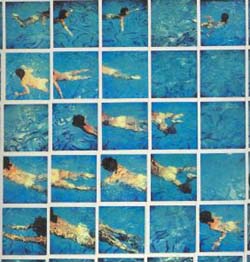Learning more about photography is the best way to improve yourself. You will be able to figure many things out that will protect you from falling victim to the silly and simple mistakes that can occur causing you bad results or missing the shot altogether.
Your image can be considerably better if you get in close proximity to your subject. Getting up close gives you a better conceptual focus, and blots out background distractions. It can also give you a better grasp of how to capture the emotions and expressions that define a great portrait. Those small, yet important details are often lost when you’re standing too far away.
You can use digital software to create the look of oil paintings, pencil sketches, water colors and many others. There are various image editing software for digital photos, but the program Adobe Photoshop, is pretty much the industry standard. Providing your photos with those artistic conversions is simply a matter of opening the “filter” menu and picking the effect you find most appealing.
Make sure you know exactly what is going into each photograph. Your picture should be composed in such a way that it gives some insight into your subject. Avoid the desire to show more than is needed. If you are trying to convey an overall impression of a scene, shoot a sequence of pictures, instead of a single image without a clear subject.
Don’t get ahead of yourself and try to adjust all the camera settings without really knowing what you’re doing. You should try to become knowledgeable about one part of a control, such as shutter speed or aperture, prior to moving on to the next one. That way, you can focus your attention on taking pictures instead of toying with the camera as you miss golden photo opportunities.
Try things that you think would be interesting and new; don’t be afraid to explore. A creative picture should showcase your own style and allow viewers to see the world in a certain way. Try to refrain from taking classic pictures, which can be very mundane and unoriginal. Experiment with new angles, and be creative.
Shutter Speed
Here is a good photo tip! You should take the time to educate yourself on shutter speed. There are P, M, A, and S settings on your camera. Using the “P” setting will put your camera into program mode. This is the fully automatic setting of your camera, and it sets the aperture and shutter speed automatically for you. If you don’t know what you’re shooting, use your “P” setting.
If you are going on a trip, do not wait to reach your destination to start taking pictures. Think of traveling itself as a good opportunity to take pictures, besides the shots you will take once you reach your destination. Take pictures at different stages of your journey, for instance in airports.
Shutter speed, ISO and aperture are important aspects of any great photo. It’s important to find the combination of these. These are how you determine your picture’s exposure. You do not want to wind up with underexposed or overexposed photos unless you are aiming for that. Play around with the features to judge how they work together. Use the combination you like the best depending on the environment.
Have some fun experimenting with different expressions, perspectives and scales. Even the simplest of objects can be viewed as works of art, if you portray it in such a way. Experiment with your compositions to bring a unique perspective to an ordinary object.
Clearly, becoming a better photographer is quite easy if you know the right steps to take. You just need to practice, research, and constantly better your shots. You’ll see the benefit over time as you see all your pictures developed.








